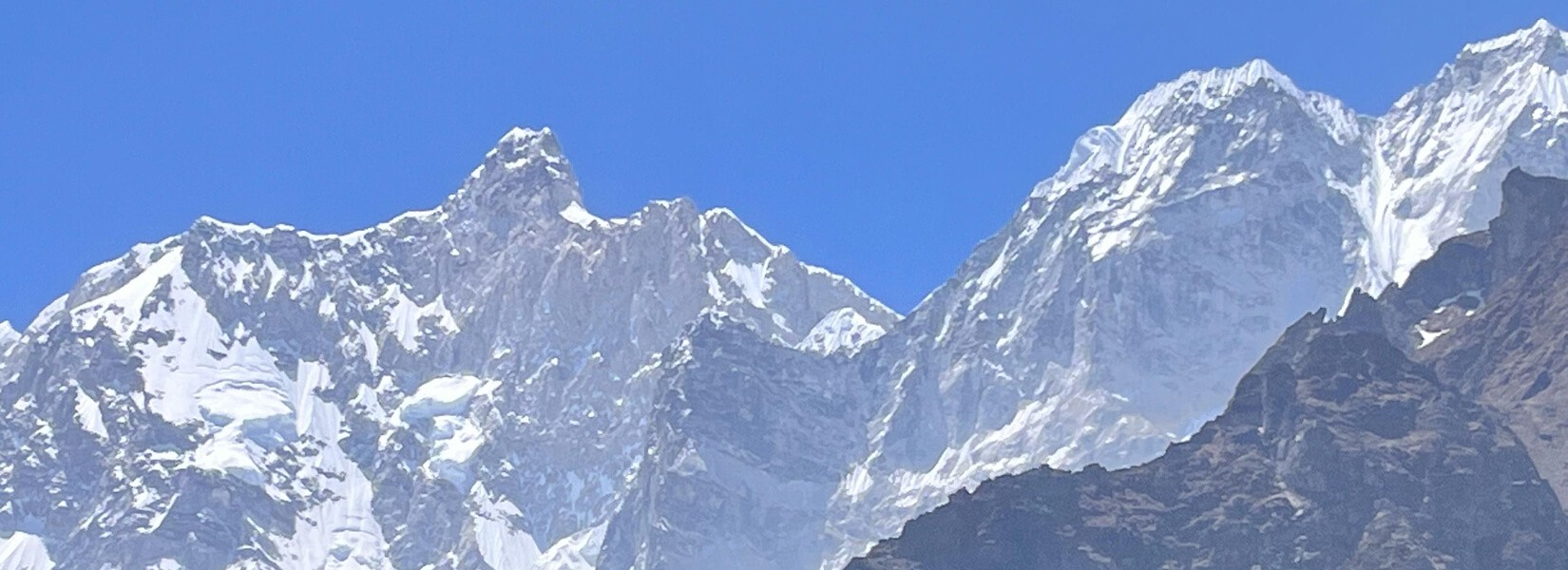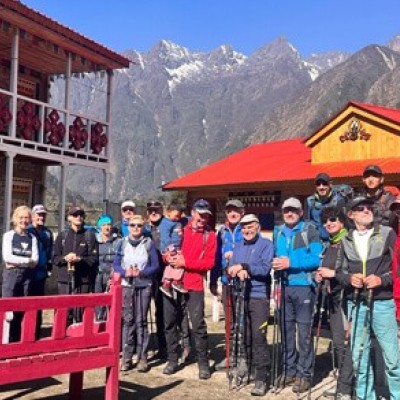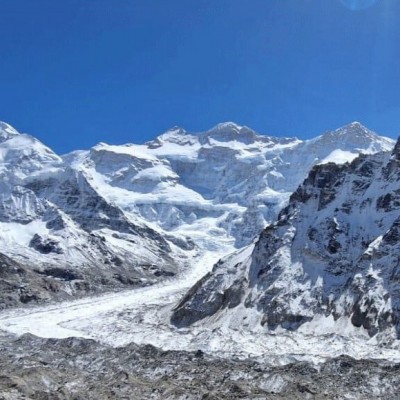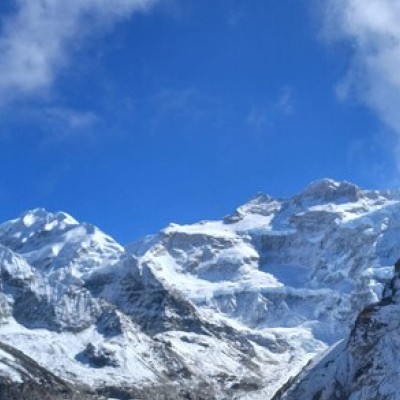What’s Included in the Short Kanchenjunga Trek Cost?
While planning a short Kanchenjunga Base Camp Trek, understanding what is included in the total trip cost can help you budget strategically, and avoid unexpected expenses along the Kanchenjunga hiking trails. A wide range of elements, including special permits, logistics including Kanchenjunga teahouse fees, food items, transportation, and guide and porter services, affect the cost of trekking in remote Eastern Nepal, and the entire journey.
Knowing the accurate cost inclusions in your trekking package ensures a comfortable adventure. Also, it allows you to concentrate on the surreal beauty of stunning landmarks and immerse yourself in the rich cultures of various ethnic groups, such as Rai, Limbu, and Sherpa. The inclusion and exclusion of the Short Kanchenjunga Base Camp Trek are as follows:
Included
- Airport pick-up and drop-off (International and domestic) by private vehicle
- Welcome and farewell dinner at a typical, authentic Nepali restaurant with cultural dance.
- 2 Nights at a 3-star deluxe hotel in Kathmandu, Thamel, on a BB (Breakfast) basis, and 17 nights
- Tea/House Lodge accommodation during the trek
- Kathmandu to Bhadrapur and Kathmandu by plane (domestic Flight), including guide and assistance
- (For Group) Bhadrapur to Phikkal and Sekathum, again Sekathum-Taplejung-Phikkal, and Bhadrapur by private/local Jeep.
- All Nepal government VAT, local taxes, and service charges.
- Food and Drinks: 18 Breakfasts, 17 Lunches, and 18 Dinners (open menu to choose any one item per meal from the menu), 3 cups of Tea/Coffee per day during the trek (Not beans and machine coffee)
- An experienced, Local, expert, government-licensed trekking guide and one strong porter for every 2 people’s luggage (maximum 10-12 Kg per head allowed)
- Daily salary, meals, equipment, transportation, insurance, and guide and porter
- All required permits: Kanchenjunga Conservation Area Project (KCAP) fees, Special restricted region trek permit, and Trekkers Information Management System (TIMS) Card
- Trek Equipment: Sleeping bag, down jacket, Trekking pole, Trek route map, water purification tablets (If Required)
- Assistance in high-altitude emergency evacuation and coordination with your travel insurance company
- All important first-aid medical kitbag, Company comprehensive T-shirt, trek completion and appreciation certificate
Excluded
- Nepal Visa and international flight ticket
- Travel insurance and extra personal Expenses
- All Extra drinks like Coca-Cola, Hot Chocolate, Beans, machine coffee, and alcoholic drinks
- Tips for guides and porters
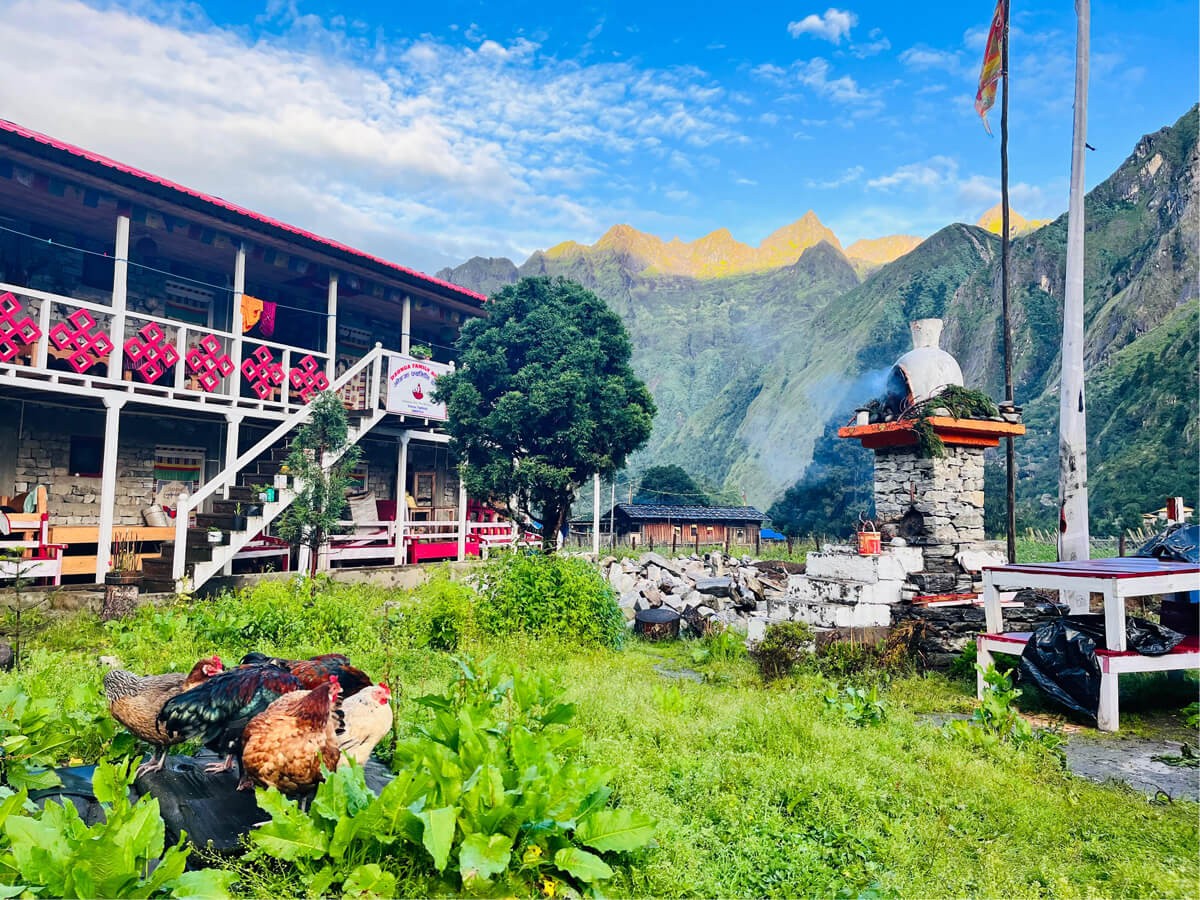
What Factors Influence the Cost of the Short Kanchenjunga Trek?
Generally, the trekking expenses to Kanchenjunga differ from one adventurer to another depending on individual's requirements and numerous factors, including the chosen route, trekking season, group size, required facilities, duration, and the total length of the trek. When you understand the elements influencing the complete trekking budget, you can make a plan by optimizing your expenses and enjoy surprises on the trail without giving up convenience or the trekking experience. The explanations of the factors that vary Short Kanchenjunga Hiking Cost are as follows:
How does the itinerary impact the short Kanchenjunga trek?
It is crucial to know that the itinerary you choose, with longer or fewer days, is also one of several factors impacting the complete price for the Short Kanchenjunga Base Camp Trek. The short itinerary will allow you a more affordable as well as enjoyable journey since reducing trekking days means fewer expenses for arrangements, including permits, overnight stays, food, and guide or porter support.
The cost of the trek naturally increases as you lengthen your hiking period, including further acclimatization periods with side trips and more cultural immersion in quaint settlements of the Kanchenjunga. While choosing the longer itinerary, you have a sufficient period to spend time in the most remote areas of Nepal, although added days influence the trekking price.
Group Size and trekking seasons
Trekking in a large group is often more affordable than individual trekking often costs, as you can share expenses for as many things as possible, including accommodation, porters, guides, and transportation in a group. In addition, higher demands for flight, guides, accommodation, porters, etc., during the trekking seasons, such as spring (March to May) and autumn (September to November), increase the Kanchenjunga trekking price.
Even though you have a discount on packages in the off-season, the weather conditions do not let you enjoy them to the fullest. Therefore, balancing between group size and the optimal period for the Short Kanchenjunga Base Camp Trek assists you in accomplishing the journey.
Mode of Transportation and Accommodation Standard
The means of transportation you use for the Kanchenjunga short Trek to reach the initial point of hiking also determines its cost. Depending on Nepal Adventure Team’s itinerary, a flight of 35 to 40 minutes takes you to Bhadrapur airport, Jhapa. Afterward, drive by a private jeep along traditional settlements, high hills, and terraced fields to Taplejung and then to Sekathum, where the hiking starts. Choosing shared four-wheel vehicles or choosing alternative paths for this Trek can either reduce or increase your expenses.
The type of teahouses throughout the journey also affects the cost of Short Kanchenjunga trekking. A common teahouse with basic facilities in remote areas is more budget-friendly than a lodge/guesthouse with modern equipment and services, including attached bathrooms, hot showers, Wi-fi, and more food items at lower elevations. Options for lodges are more available with luxurious facilities in large settlements with hotels, letting you select as per your economic status. Nevertheless, the choice for overnight stays is simple and limited with affordable Kanchenjunga teahouse fees, and you must adjust there.
Guide and Porter Services for Kanchenjunga Trek
Guides and porters assist in enhancing your journey at the heart of the Kanchenjunga region, allowing you to focus on navigating difficult sections of the trek, including steep terrain and high mountain passes such as Sele La and Mirgin La passes. While hiring professional guide and porter services, they also impact the Short Kanchenjunga Hiking Cost.
The trek duration, backpack weight, and group size influence the fee for guides and porters as they have extra energy for a larger load. Although they ensure your safety, cultural immersion, and correct trail navigation, the daily wages add more expense to the Short Kanchenjunga Base Camp Trek. Therefore, the idea to reduce money is also to hire a guide for two trekkers and a porter for a shared purpose.
Trekking Agencies and Kanchenjunga Permit Fees
Solo/independent trekking is not possible anymore as per the Nepal government's rule for the trekkers’ safety. When you choose reputable trekking agencies for your trip, you get a stress-free experience as they can arrange it without putting too much financial burden on you. Hence, ensure that your travel company is reliable and is not serving trekkers for only personal gain but also aiming to provide the best experience.
Since the Kanchenjunga region is a restricted area, nestled near border of Nepal, and India, you need to obtain three permits, such as a Kanchenjunga Restricted Area Permit (KRAP), a Kanchenjunga Conservation Area Permit (KCAP), and a TIMS (Trekkers Information Management System) Card, before embarking on the journey.
It is crucial to understand the rules and regulations and the accurate fee regarding permits before processing. Although the Kanchenjunga Permit Fees stay consistent, the costs may differ slightly depending on revised government regulations or service costs from the trekking agency.
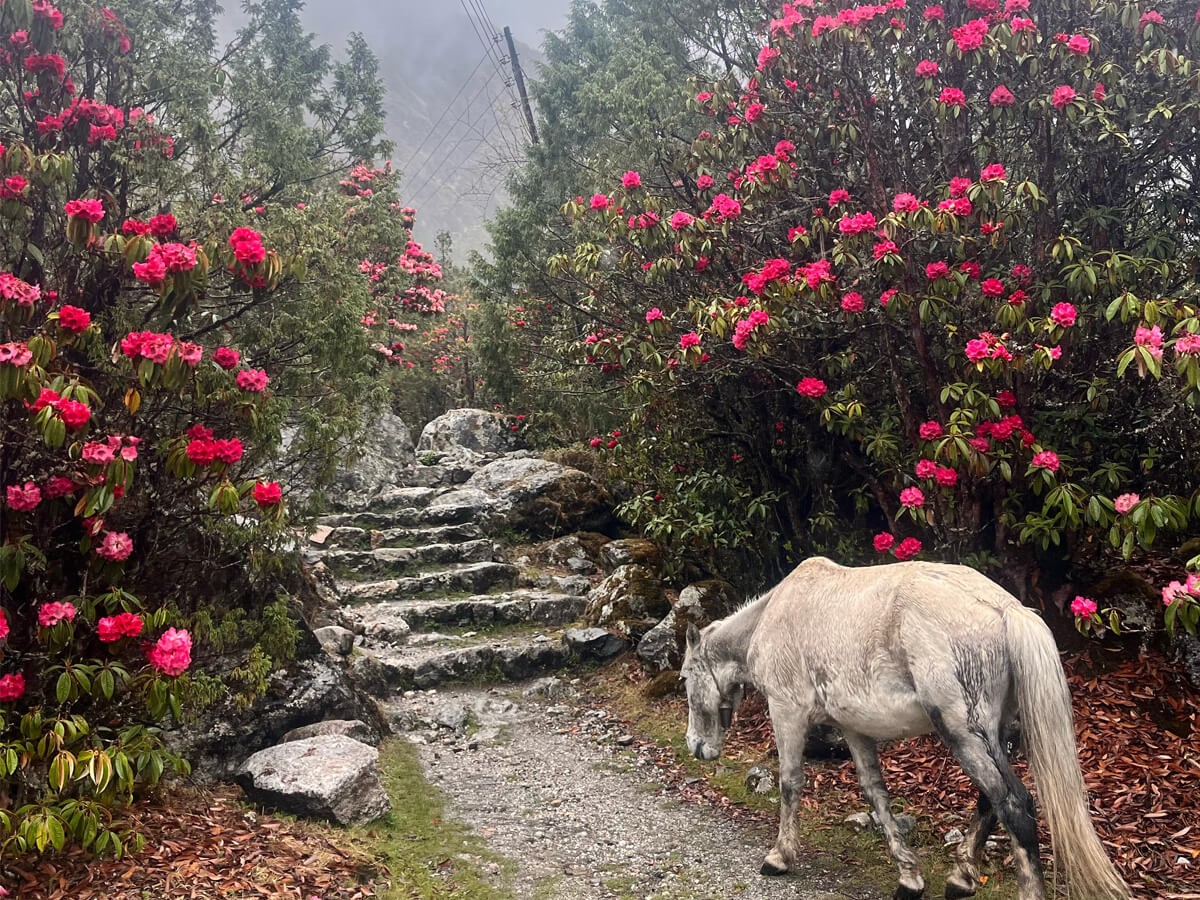
How is the Short Kanchenjunga Base Camp Trek of 19 days more affordable than the circuit trek?
The Short Kanchenjunga Base Camp Trek is a more cost-effective choice in comparison to the classic Kanchenjunga Circuit Trek, as its duration is shorter and it has a focused trekking itinerary. Whereas the Kanchenjunga Circuit Trek includes extra side trips, both treks still reach Kanchenjunga North/ Pangpema(5143m) and Kanchenjunga South/Oktang (4730 m), Base Camps. Although the Short Kanchenjunga Base Camp Trek cost is somewhat lower, the enjoyment is just as great as the circuit trek.
The Kanchenjunga Short trekking itinerary takes you directly to Bhadrapur Jhapa with a flight the day after you arrive in Kathmandu, whereas the Kanchenjunga Circuit trek begins with a sightseeing tour of the Capital City. Although you use an airplane to reach Bhadrapur and get back to Kathmandu, the circuit trek costs more since the circuit itinerary includes an extra 6 days.
The Kanchenjunga base camp short itinerary minimizes overall costs, including the accommodation costs, daily meal charges, and guide and porter fees, making it more budget-friendly since fewer days in isolated terrain.
For clarity, we have mentioned below the comparison between the Short Kanchenjunga Base Camp Trek and the Classic Kanchenjunga Circuit.
| Short Kanchenjunga Base Camp Trek (19 days) | Classic Kanchenjunga Circuit Trek (25 days) |
Day 01: Arrival in Kathmandu and transfer to the hotel | Day 01: Arrival in Kathmandu and transfer to the hotel |
Day 02: Fly to Bhandrapur and drive to Taplejung (9-10 hours) | Day 02: Kathmandu sightseeing and trek preparation (4-5 hours) |
Day 03: Drive to Sekathum (9-10 hours) | Day 03: Drive to Ilam by deluxe AC bus (15-16 hours) / 655 km |
Day 04: Trek from Sekathum to Amjilosa (4-6 hours) | Day 04: Drive to Taplejung (7-8 hours) |
| Day 05: Trek from Amjilosa to Gyabla (5-6 hours) | Day 05: Trek from Taplejung to Mitlung (5-6 hours) |
Day 06: Trek from Gyabla to Ghunsa (5-6 hours) | Day 06: Mitlung to Chiruwa (5-6 hours) |
| Day 07: Trek from Ghunsa to Khambachen, visit Kumbakarna base camp (6-7 hours) | Day 07: Trek from Cheruwa to Sekathum (5-6 hours) |
Day 08: Trek from Khambachen to Lhonak (5-6 hours) | Day 08: Sekathum to Amjilosa (4-5 hours) |
Day 09: Trek from Lhonak to Pangpema (North) Base Camp (5,143) and return to Lhonak (6-7 hours) | Day 09: Amjilosa to Gyabla (5-6 hours) |
Day 10: Trek from Lhonak to Ghunsa ( 6-7 hours) | Day 10: Trek from Gyabla to Ghunsa (2-3 hours) |
Day 11: Trek from Ghunsa to Sele Le High Camp (4-5 hours) | Day 11: Acclimatization day at Ghunsa (rest day) |
Day 12: Trek from Se Le High Camp to Chairam (4-5 hours) via Se Le Pass | Day 12: Trek from Ghunsa to Khambachen. (6-7 hours) |
Day 13: Trek from Chairam to South Base Camp visit, lunch at Ramche, and back to Chairam (4-5 hours) | Day 13: Trek from Khambachen to Lhonak. (6-7 hours) |
Day 14: Chairam to Torangdin (4-5 hours) | Day 14: Trek from Lhonak to Kanchenjunga North Base Camp and return to Lhonak (3 hours)Day |
| Day 15: Trek from Torangden to Ranipul (5-6 hours) | 15: Trek from Lhonak to Ghunsa. (7-8 hours) |
Day 16: Drive from Ranipul to Taplejung (7-8 hours) | Day 16: Ghunsa to Se Le High Camp. (5-6 hours) |
Day 17: Drive from Taplejung to Ilam (4-5 hours) | Day 17: Trek from Sele Le High Camp to Cheram via Sele-La Pass. (7-8 hours) |
| Day 18Drive from Ilam to Bhadrapur Airport and fly to Kathmandu (4-5 hours) | Day 18: Cheram to Ramche. (6-7 hours) |
| Day 19: Finale departure | Day 19: Ramche—Explore Yalung Base Camp and return to Cheram (7-8 hours) |
| | Day 20: Trek from Cheram to Torongding. (5 hours) |
| | Day 21: Torongding to Yamphuding. (6-7 hours treks) |
| | Day 22: Yamphudin to Khebang (5-6 hours trek) |
| | Day 23: Drive from Khebang to Phikkal (6-7 hours) |
| | Day 24: Drive to Bhadrapur Airport and fly back to Kathmandu (1-2 hours of driving, 40-45 minutes of flying) |
| | Day 25: Final Departure. |
How can you prepare for reducing the cost of the Short Kanchenjunga trek?
As you know about the factors affecting the budget for the Kanchenjunga trek, it is essential to plan for the short Kanchenjunga trekking to make it less expensive without lowering the quality of the journey. Minimizing unnecessary costs is necessary while strategically preparing. The wise management lets you savor the region’s awe-inspiring scenery and authentic cultures of locals (Rai, Limbu, and Sherpa) who have a deep connection to the region and the Himalayas without stress.
Therefore, some suggestions/tips for a budget-friendly Short Kanchenjunga Base Camp Trek are as follows:
- Although the Kangchenjunga trekking trail is less traveled compared to the Annapurna or Everest region, book on time (in advance) since the high demand for bookings during trekking seasons may delay your journey.
- Choose the right travel agency that does not take extra benefits from adventurers for personal gain and ensure that they manage essential trekking permits and logistics (food, accommodation, trekking gear, etc.).
- Use local vehicles or a shared private jeep to reach your initial point (Sekathum) and to return to Kathmandu from Bhadrapur, since domestic flights cost more than local transport.
- Select more affordable travel insurance that meets your economic status. However, ensure that the insurance covers the helicopter evacuation above 3000m in case of emergency, as well as avoiding extra expenses when unforeseen events such as flight delay, cancellation, damage to personal belongings, loss, or theft occur.
- If you want trekking gear just for the Short Kanchenjunga Base Camp Trek, you can rent equipment on rent at a reasonable price and return it after completion.
- Carry some nutritious snacks, including energy bars, chocolates, dry nuts, and fruits, since the prices of food may be higher than normal in high-altitude remote areas.
- Try to adjust to a common teahouse with simple facilities and common food items (Dal, and Bhat) along the trails.
- Hire a guide and a porter, considering sharing their support in a team rather than personally hiring because the cost is divided, and the porter and guide costs become lower per person.
- Choose the suitable itinerary that has an appropriate trekking duration, providing enough acclimatization days and time for spending in the stunning landscapes of the region.
Conclusion
To sum up, the Kanchenjunga short trek is an epic Himalayan odyssey for trekkers seeking an off-the-beaten-path escape from the hustle and bustle of cities. You’ll really appreciate an unparalleled experience through the untouched landmarks of Kanchenjunga in less than 3 weeks at an affordable price. If you want something more strenuous, Kanchenjunga trekking for testing yourself physically and mentally, then we also have lengthier packages.
Among them are the Classic Kanchenjunga Circuit Trek and Kanchenjunga North and South Base Camps, which are popular. After knowing Trekking Expenses to Kanchenjunga, it is in your hands to choose the right one for you. Those seeking moderate-level hiking can choose either the Langtang, Annapurna, or Everest region. Contact us on WhatsApp or email us for more inquiries regarding the journey.

FAQs
What is the best time for Kanchenjunga region trekking?
Spring (March to May) and Autumn (September to November) are the optimal times of the year to embark on the Kanchenjunga trekking since they feature an appropriate climate with moderate temperatures. The skies become crystal clear, and the trails are dry, allowing adventurers to enjoy the beauty of the region without disturbance.
What is the highest point of the Short Kanchenjunga Base Camp Trek?
The highest point of the Short Kanchenjunga Base Camp Trek is the Kanchenjunga North/Pangpema Base Camp (5143m).
Why do you need to obtain travel insurance for the Short Kanchenjunga trekking?
Travel insurance avoids extra expenses on medical treatment, helicopter evacuation, flight delay, cancellation, damage to your things, loss, or theft.
Does high acute sickness occur during the Short Kanchenjunga trekking?
Yes, there is a possibility of high altitude sickness during the Short Kanchenjunga trek since the trek takes you to the mountainous landscapes above 5000.
Can you extend the 19 days Short Kanchenjunga trekking?
Yes, you can extend the Short Kanchenjunga trekking based on your preferences since we prioritize your choices.
